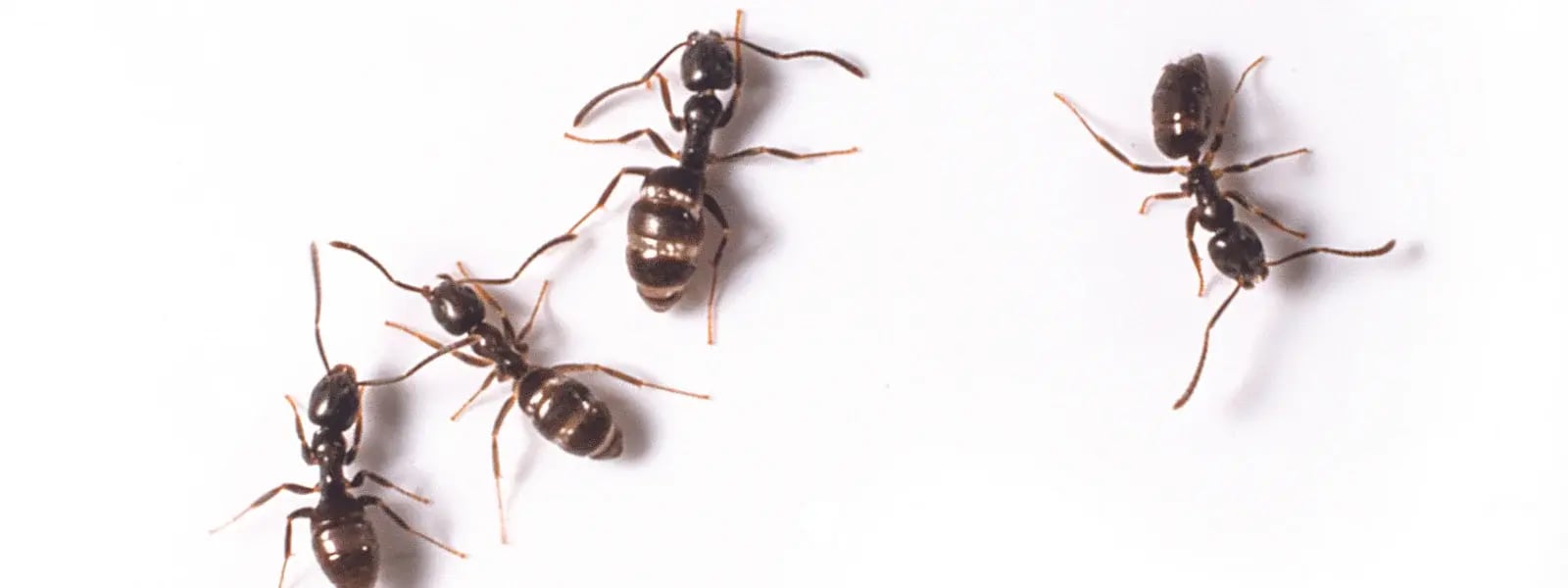
Ant Exterminators
Your Local Ant Control Experts
Serving Long Island | Nassau County | Suffolk County | Brooklyn | Queens
Ants rank among the top nuisances in the United States, with their ability to multiply rapidly and invade spaces in vast numbers. Tackling these infestations on your own can prove daunting, if not impossible, given their complexity and scale.
Fortunately, for homeowners and business owners on Long Island, there's no need to face this challenge alone. EM Pest Control has a dedicated team of knowledgeable ant exterminators to deliver safe and efficient treatments against ant infestations.

- Small species that are reddish-brown to black
- Colonies are large, with multiple queens, and create small mounds of dirt in pavement cracks, driveways, and bricks.
- Pavement ants get their name because they make their nests in or under cracks in pavement. They can infest structures.
- These ants will eat almost anything, including insects, seeds, honeydew, honey, bread, meats, nuts and cheese.
- These ants live in or under pavement cracks.

- They are black but can appear reddish or brown and are among the largest species in the United States.
- Like termites, carpenter ants are attracted to places with moisture.
- Unlike termites, they don't eat the wood. Rather they chew away at wooden structures to create a network of tunnels that lead to their nests. Over time, these tunnels can cause structural damage to your property.
- All species mainly attack wood that is or has been wet and damaged by mold. Even though these ants first invade wet, decayed wood, they may soon begin building paths through dry, undamaged wood.
- They usually come into buildings through cracks around doors, windows, or through holes for wires. They will also crawl along overhead wires, shrubs, or tree branches that touch the building far above the ground.
- Carpenter ants build their nests outdoors in various wood sources, including tree stumps, firewood or landscaping. They need a constant water source to survive. They will enter homes through wet, damaged wood.

-
Small species that are dark brown to black
-
This ant gets its name from the strong, rotten coconut-like smell it gives off when crushed. These tiny insects' range in size from one-sixteenth of an inch to one-eighth of an inch long.
-
Odorous house ants like to eat sweets, especially melon.
-
Typically living for several years, these ants make their homes in exposed soil and wall voids.
-
These ants do not pose a public health risk, but they can contaminate food and should be avoided.
Why Call EM Pest Control?
Many residents of Long Island are all too familiar with the frustrations of ant infestations. There's a common urge to immediately buy over-the-counter ant control solutions, but these quick fixes seldom address the root of the problem.
Allowed to thrive, ant colonies may branch out, forming new colonies that besiege your home from all directions. Successfully tackling an ant colony without professional assistance can be a daunting challenge. Partnering with local ant experts is essential to effectively eliminate ants from your property.
Our pest control services offer the following:
- Customized treatment plans - weekly, monthly, bi-monthly, quarterly or yearly
- Prompt, high-quality treatments
- Skilled and knowledgeable technicians
- State-of-the-art tools and techniques
- Conventional & Eco-friendly pest control products
- Detailed reporting
- Service and solutions are satisfaction guaranteed!
